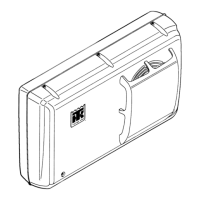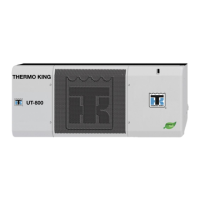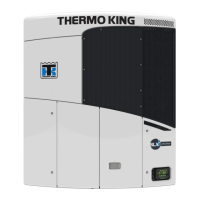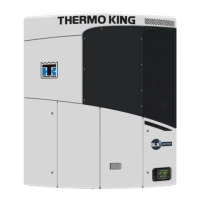Refrigeration Maintenance and Service Operations
143
Factors Affecting the Speed of
System Evacuation
It is almost impossible to state the exact amount
of time required to evacuate any system. Some
factors that can influence evacuation time are
listed below.
• System size
• Amount of moisture contained in the system
• Ambient temperature
• Internal restrictions within the system
• External restrictions between the system and
the vacuum pump
Hose size, both diameter and length, affect
evacuation times. Laboratory tests show that the
evacuation time can be significantly reduced by
larger diameter hoses and shorter hoses. To obtain
optimum pumping speed, keep hoses as short as
possible and as large in diameter as possible. For
example, it takes eight times as long to pull a
given vacuum through a 6 mm (1/4 inch) diameter
hose as it does through a 12 mm (1/2 inch)
diameter hose. It takes twice as long to pull a
vacuum through a 2 meter (6 foot) long hose as it
does through a 1 meter (3 foot) long hose.
Heat Saves Time
A useful and practical time saver is the application
of heat to the system. Increasing the temperature
of the compressor oil and refrigerant will speed up
the vaporization of any water present in the
system.
Heat lamps, electric heaters, or fans can be
applied to the compressor crankcase and other
parts of the system to increase the temperature of
the refrigerant and compressor oil.
Charging the System with
Refrigerant
Unit Charging by weight (from an
Evacuated Condition)
1. Close valve V4.
2. Open the gas ballast valve (located on top of
the pump housing behind the handle).
3. Stop the vacuum pump.
4. The discharge valve remains mid-seated.
5. Connect the refrigerant tank with gauge
manifold to the evacuation station (see
“Evacuation Station and Unit Hookup” in this
chapter).
6. Weigh the tank of refrigerant.
7. Check the unit data plate for the required
weight of refrigerant charge then subtract the
amount of the charge to be input to your unit
from the total weight of the tank of refrigerant.
This provides final tank weight after the unit
receives a full system refrigerant charge.
8. Set the refrigerant tank for liquid removal.
Open the hand valve on the tank.
9. With the unit off, open the gauge manifold
hand valve and charge liquid refrigerant into
the system.
10. Close the refrigerant tank hand valve when the
correct amount (by weight) of refrigerant has
been added or if the system will take no more
liquid. The unit is now ready to have the
evacuation station removed.
Evacuation Station Removal
1. Back seat the discharge service valves.
2. Close the high pressure hand valve on the
gauge manifold.
3. Close the refrigerant tank hand valve.
4. Open the hand valve at the gauge manifold
and read suction pressure.
5. Operate the unit in Cool mode until the
suction pressure decreases below 385 kPa,
3.85 bar, 50 psig.
WARNING: Never use a torch or other
concentrated heat source to heat the
compressor or other refrigeration system
component.
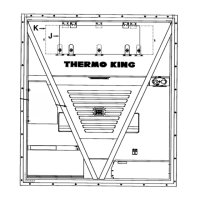
